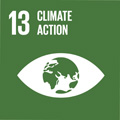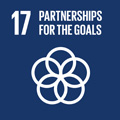- Docente: Markus Tobias Flinspach
- Credits: 3
- SSD: SECS-P/07
- Language: English
- Teaching Mode: Traditional lectures
- Campus: Forli
- Corso: First cycle degree programme (L) in Management and Economics (cod. 5892)
-
from Nov 20, 2024 to Dec 11, 2024
Learning outcomes
The course aims to provide students with some tools and techniques of cost management in several contextes (for-profit, non-profit, private, public). By the end of the course students are able to: (a) to define the network of responsibility center, the different types of responsibility centers, and the basis for choosing the most appropriate type; (b) to understand what are the phases of the management control process and the characteristics of each; (c) to understand some of the issues involved in measuring non-financial performance and to implement effective integrated (financial and non-financial) measurement systems. This course is integrated with Business Analytics as it completes the integrated course Analytics for Management (I.C.) with the competences needed to analyze the organizational structure of the company, the responsibility owned by each department and the analytical information needed to measure and manage performance of the company.
Course contents
1. Concepts and challenges of contemporary management control systems
Management accounting and control systems.
Basic components of management control systems design. How are businesses managed? Establish mission vision and objective. The changing business landscape. Balancing risk and return. What is management accounting? How useful is management accounting information?
Managing strategic decision, controlling strategic decision in a competitive environment.
Budgeting and how the budget links with strategic plans and objectives. Using budgets in practice
Budgeting for control
Strategic management accounting
Non-financial measures of performance
Readings/Bibliography
Materials prepared by the instructor and available on Virtuale.
Teaching methods
The course is based on class discussions and active participation by students. Classes comprise a mix of lectures and in class activities.
Assessment methods
Written exam and group work
Teaching tools
The Virtuale website will be available to students with slide and additional material before the beginning of the course.
Office hours
See the website of Markus Tobias Flinspach
SDGs



This teaching activity contributes to the achievement of the Sustainable Development Goals of the UN 2030 Agenda.
